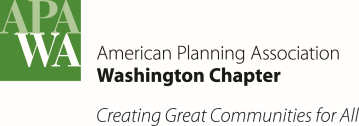- About Us
- Events & Training
- Professional Development
- Sponsorship
- Get Involved
- Resources
Embracing Stretch Assignments: Lessons from the Waterfront to Paid Parking, Part 1By: Heather Wright, AICP I’ve always loved stretch assignments—the kind of challenges that push you beyond your comfort zone and expand your expertise. I’ll never forget my first. The island city I worked for had received an unexpected windfall from Washington State Ferries, and the city council decided to reinvest those funds into revitalizing their underutilized and outdated waterfront park. The planning director needed someone to lead the public outreach effort, and I eagerly stepped up. Before I knew it, I was organizing community meetings, partnering with local groups, and leading walking tours to gather input on how the park should be used. Soon, I was drafting an RFQ, selecting a consultant, and presenting design alternatives to the public for a vote. Along the way, I even added the word "pétanque" to my vocabulary—an unexpected perk of the process! The day I toured the finished park, with its now-iconic stormwater feature flowing through the heart of the space, was one of immense pride. That was ten years ago. Since then, I’ve transitioned from planner to director and moved to a new city. Three years into my current role, I took on one of my most complex and controversial stretch assignments yet: implementing paid parking. This article marks the beginning of a series where I’ll share insights on implementing paid parking—what works, what doesn’t, and what can set a program up for success. As parking reform gains momentum and more communities lower or even eliminate parking requirements, I suspect this topic will land on many planners’ desks. My hope is that this series helps others feel more prepared for the challenge. As planners, we wear many hats. Our work extends beyond land use to include stormwater, geological hazards, wetlands, shoreline functions, housing, climate change—the list goes on. But we can’t be experts in everything. Just as we rely on specialists for traffic studies or environmental reports, we should give ourselves permission to seek professional expertise in parking management. Lastly, it’s good to have an expert in the room when presenting a parking proposal at a community meeting. Parking is a controversial issue. Businesses think it will kill business, and experts say it will help business by leading to turn over and creating available spaces. When having these difficult conversations with the community, and the electeds, it is nice to have research-backed insights on parking patterns, turnover rates, and economic impacts. Next month’s topic -the focus will be on the importance of a committee - stay tuned! |

